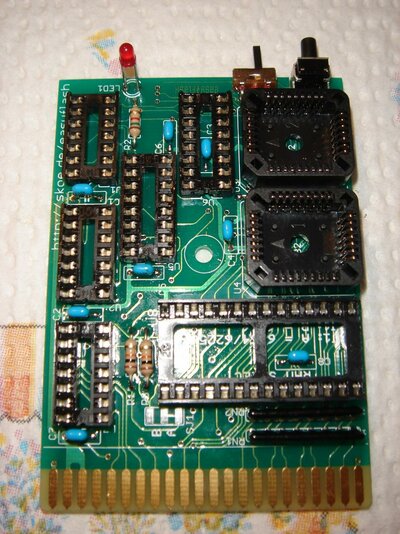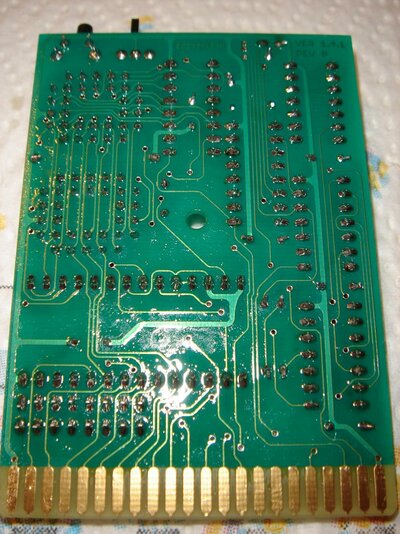SkydivinGirl
Retro Girl
He everyone!
As many of you know, I asked a little while ago where to get help with proper soldering. Many of you stepped up and gave me some wonderful advice and I was finally able to put it to use. Today, I soldered together my EasyFlash kit and it looks wonderful! I think I went a little overboard with the flux and had a couple correctable mistakes but no problems otherwise.
The only problem I have at this point is the flux left a very sticky residue on the board that I don't know how to remove. I used 91% Isopropyl alcohol to neutralize the flux but the board is a sticky mess. Would someone please let me know the best way to remove this? I can't put the chips in the sockets or finish testing until I clean the board.
Would someone please let me know the best way to remove this? I can't put the chips in the sockets or finish testing until I clean the board.
Here's pictures of the board as it sits. I'll put up more pictures once it's populated and working.
Thank you all again for your help!
Heather
As many of you know, I asked a little while ago where to get help with proper soldering. Many of you stepped up and gave me some wonderful advice and I was finally able to put it to use. Today, I soldered together my EasyFlash kit and it looks wonderful! I think I went a little overboard with the flux and had a couple correctable mistakes but no problems otherwise.
The only problem I have at this point is the flux left a very sticky residue on the board that I don't know how to remove. I used 91% Isopropyl alcohol to neutralize the flux but the board is a sticky mess.
Here's pictures of the board as it sits. I'll put up more pictures once it's populated and working.
Thank you all again for your help!
Heather



